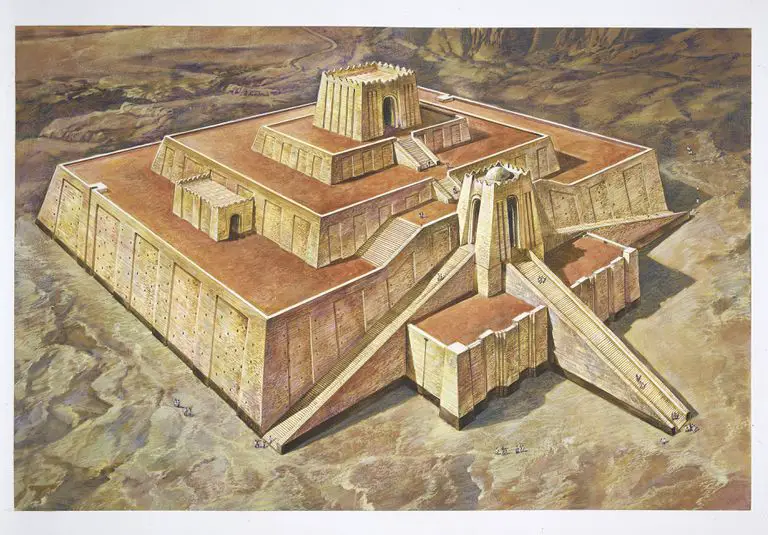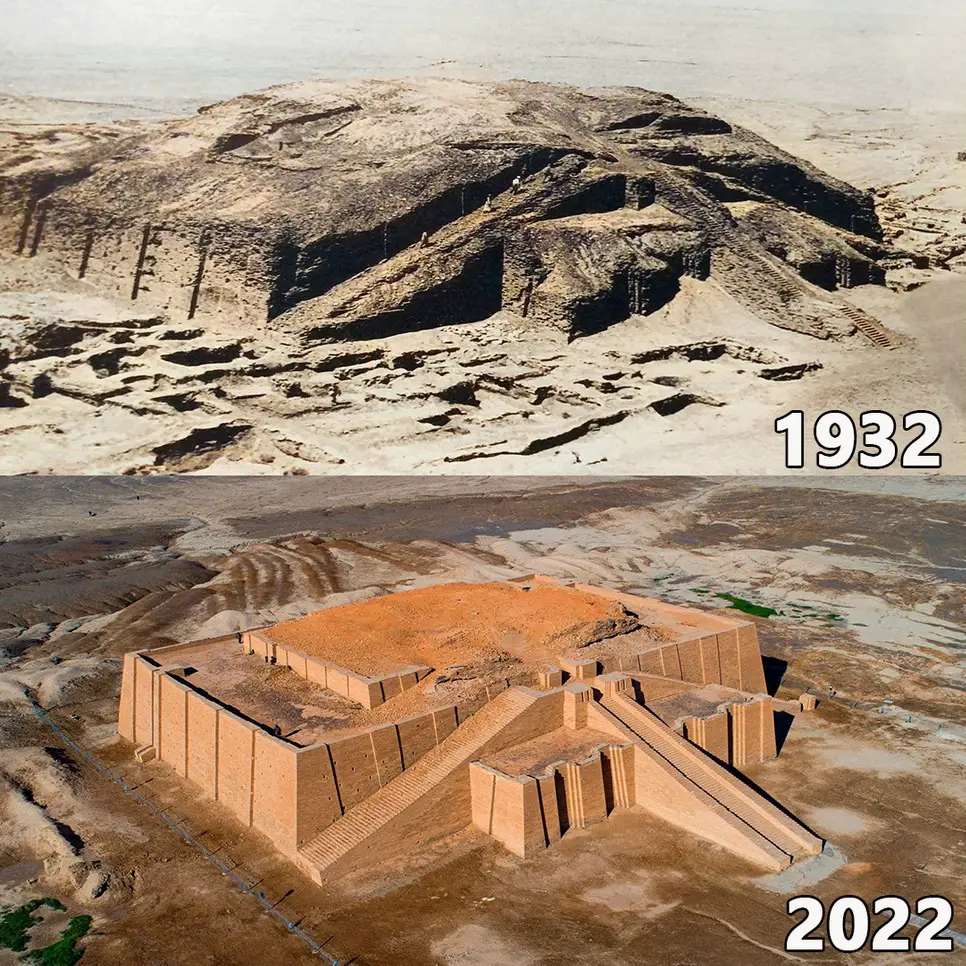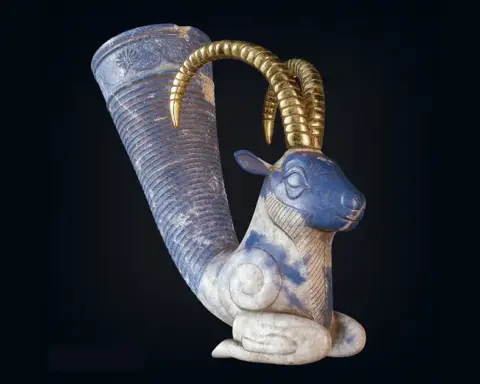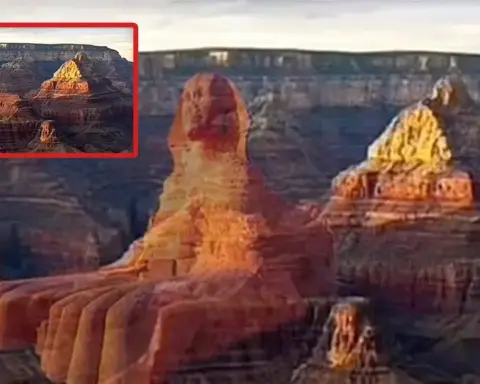Nestled within the ancient city of Ur, the Great Ziggurat stands as a monumental enigma. Raised over 4,000 years ago by King Ur-Nammu, this towering structure was an ode to the Moon God, Nanna, shrouded in mystique and purpose.
Crafted meticulously with mud and baked bricks, this architectural wonder soared to around 70 feet, a testament to the prowess of ancient Sumerian engineering. Its significance, however, transcended mere physical grandeur.

Constructed as a celestial link between mortals and gods, the ziggurat served as a conduit to the heavens. Nanna, the Moon God, held sway over Ur’s inhabitants, and this magnificent edifice was erected to honor and commune with this divine entity.
For centuries, the ziggurat held sway as the heart of Ur’s spiritual and communal life. Yet, with the ebb and flow of empires, Ur’s glory waned, and the once-thriving city, along with its sacred structure, faded into obscurity.
It wasn’t until the 20th century that the ruins of ancient Ur were unveiled by the pioneering excavations of Sir Leonard Woolley. His meticulous digs unearthed the remnants of the ziggurat, shedding light not just on its architectural brilliance but also on the intricate tapestry of Sumerian society.

Rediscovered but weathered by time, restoration endeavors began, aiming to preserve this testament to ancient worship and architectural finesse. Each brick reconstructed whispered tales of a civilization deeply rooted in spirituality and cosmic connectivity.
The Great Ziggurat of Ur, with its enigmatic allure and celestial associations, remains a beacon of ancient Mesopotamian civilization. Its story, etched in clay tablets and ancient stones, continues to fascinate and beckon the curious to explore the intricate relationship between humanity, divinity, and the cosmos.
VIDEO:






